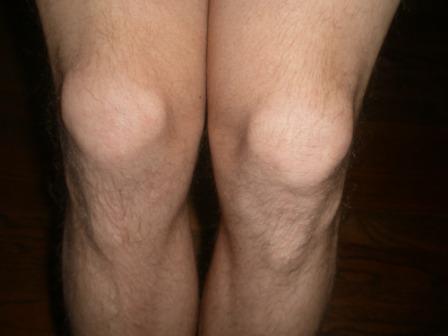Runner’s Knee – Signs, Symptoms, and Treatment
Tweet
So as I sit here, not running, resting, waiting for my doctor’s appointment I decided to take matters into my own hands, by self-prognosis. Nothing against doctors, they obviously have a greater understanding of the human body than I do, but I have a greater understanding of my individual body than they do. The doctor is probably going to write down my symptoms and Google them anyways. Why not I do it myself? I know everything Google knows. The prognosis? I have runner’s knee (makes sense). I am going to a specialist doctor on Monday to confirm. When I do, I’m going to act like I’ve never heard of the Internet. I don’t want to offend the delicate genius. Here’s the deal on Runner’s Knee:
Runner’s knee is also called chondromalacia patellan which is a general term indicating cartilage under the knee cap. Some of the symptoms are: if your knee hurts walking up stairs, hurts when sitting for long periods of time, or when you kneel on one knee (my knee hurts just thinking about someone telling me to ‘take a knee’). It often affects young, otherwise healthy athletes, usually more so in women. Also runners with knock-knees or flat feet are more susceptible to getting runner’s knee. Also, really cool and radical individuals are susceptible to runner’s knee. I’ll let you guess which category I fall in.
Runners with chondromalacia patella have abnormal patellar tracking toward the outer side of the fermur. This off-kilter pathway creates friction in the undersurface which causes inflammation. In order words, the deep cartilage in the knees is getting worn, leading to the bones in the joint to rub against each other more. These changes in the deepest layers of cartilage cause blistering on the surface cartilage, giving runners the discomfort.
Don’t fret (I’m not) this condition is capable of repair. When you feel the first signs of runner’s knee you need to rest and ice your knees. Genius. If this doesn’t work go see your doctor. You may need to adhere to some physical therapy to built the cartilage back up in your knees. You’re doctor has a brochure showing you how to do this. In the worse cases surgery may be needed for definitive treatment.
We’ll see how it goes for me on Monday but until then I’ll continue to do what the doctor is more than likely going to tell me to do for treatment anyway, rest. Doctors are experts and serve a purpose but no one knows your body like you do. You just have to ‘Listen to Your Heart’ when you’re ‘Runnin’ Down a Dream’ even though ‘The Waiting is the Hardest Part.’ Thanks Tom.
Tags: knee



That’s a very informative article. Thanks for that.
Do you have any information on shin splits? When I run, I don’t tend to have so much of a problem with my knees, but my shins. It can be tough.
While this will likely make running docs across the world cringe and roll their eyes, I think one of the best things about running is how it turns us into untrained doctors and physical therapists. We know spending inordinate amounts of time surfing the Internet for solutions to our self-diagnosed injuries is no substitute for, say, a medical degree. But it’s pretty cool to be so in touch with your own body, you can develop your own treatment plans, and can walk into the doctor powered by information.
Thanks for the support Amy. The doctor asked about the website. I had to tell him. I hope he doesn’t read it…
[…] my self prognosis was close, I don’t have runner’s knee, I have jumper’s knee. It makes sense, even though I am a runner, I used to be a jumper […]